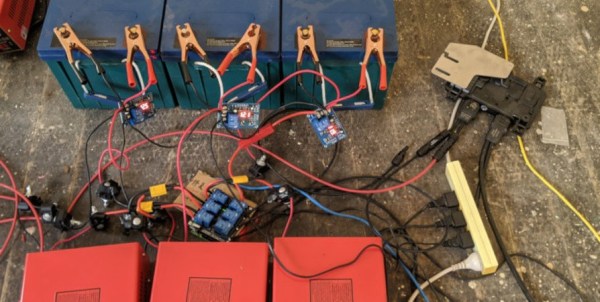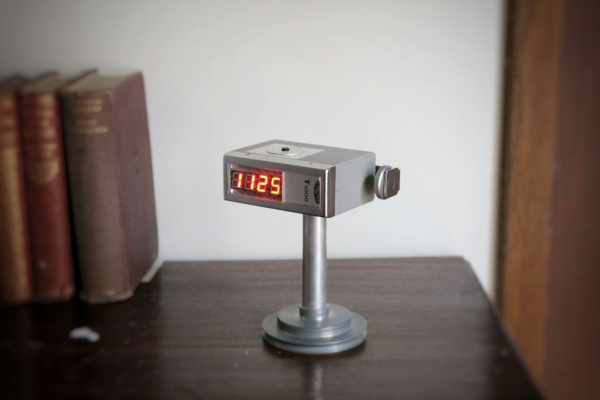One of the best things about making music is that it’s so easy to do. There are countless ways to make interesting sounds out of nearly anything if you’re willing to experiment a little bit — just ask anyone who has ever made a guitar out of a cigar box and a broom handle.
[Vicious Squid] dug in to the fertile soil of the garden implement world and cultivated a three-string upright bass with a rich, soulful sound from a familiar workhorse — an aluminium wheelbarrow. Much of the build is made from reclaimed wood, like the solid mahogany neck from an old door frame, and a broom handle.
The bass is constructed arch-top style, meaning that the soundboard — the wood on the front with the f-holes — is a flat piece tacked to curved ribs that span the width of the ‘barrow. A broom handle sound post mounted front to back pushes vibrations from the soundboard to the aluminium body. To round out the agricultural aesthetic, [Vicious Squid] strung it with weed-whacker bass strings, which are no doubt inspired by the use of actual trimmer line.
It’s already plenty loud, but [Vicious Squid] added a piezo pickup for wheeling it into the recording studio. Slap your way past the break to hear a little ditty.
Are your instrument-building skills at the sapling stage? Start with something simpler, like a sliding rubber bandolin.


















